

Bodiam Castle
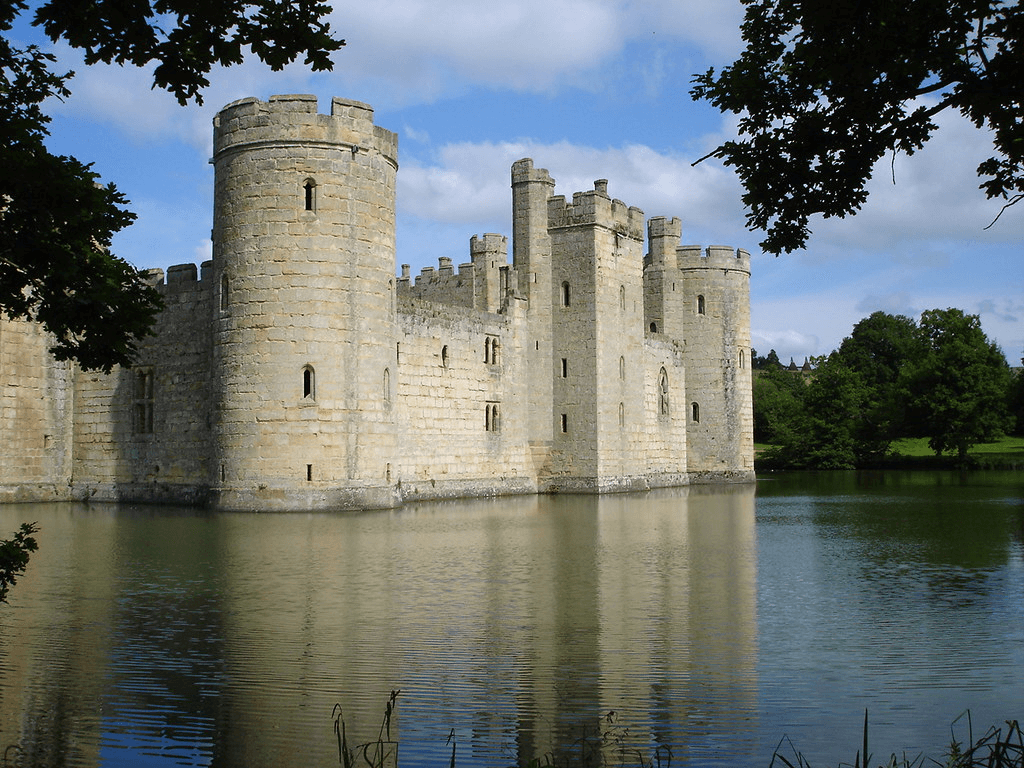
Brief History: Bodiam Castle, a quintessential example of a late medieval moated castle, was built in 1385 by Sir Edward Dalyngrigge, a former knight of Edward III. Its primary purpose was to defend against French invasion during the Hundred Years’ War. Unlike many contemporary castles built for administrative functions or as noble residences, Bodiam was designed with both defense and domestic comfort in mind.
Architectural Highlights: Bodiam Castle is renowned for its picturesque beauty, surrounded by a wide moat that reflects its almost symmetrical structure. The castle boasts a square plan with circular towers at each corner and square towers midway along each wall, a design that combined aesthetic appeal with defensive capability. Notably, the interior was as much about grandeur and comfort as the exterior was about defense, featuring high-status accommodations and large, well-lit rooms.
Visitor Information: Today, Bodiam Castle is preserved as a Grade I listed building and a Scheduled Ancient Monument. Managed by the National Trust, it is open to the public, offering a glimpse into medieval life and architecture. Visitors can explore the ruins, walk the grounds, and enjoy guided tours that bring the castle’s history to life. The castle also hosts a variety of events throughout the year, from reenactments to educational programs, making it a vibrant historical site for families, history enthusiasts, and casual tourists alike.
Herstmonceux Castle
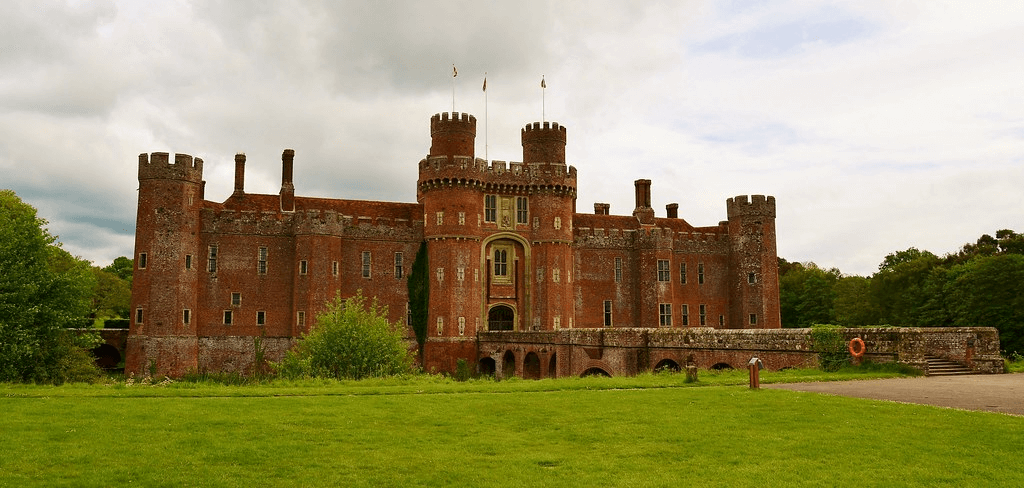
Brief History: Herstmonceux Castle, set within the idyllic East Sussex countryside, is a stunning example of a 15th-century moated castle. Constructed in the 1440s by Sir Roger Fiennes, Treasurer to the Household of Henry VI, it is one of the earliest significant buildings in England to be made from brick, a material that was then novel and expensive. Unlike many medieval castles built for defense, Herstmonceux was designed for comfort and grandeur, reflecting the growing trend of the time towards more sumptuous residences.
Architectural Highlights: The castle’s architectural design is noteworthy for its combination of medieval military architecture with the comforts and elegance of a high-status residence. Its red-brick façade is complemented by ornamental battlements and turrets, creating a picturesque silhouette against the landscape. The castle is surrounded by a series of formal gardens and parkland, adding to its scenic beauty. Additionally, the onsite Greenwich Observatory, housed in the castle’s grounds, highlights its historical role in the study of astronomy and science.
Visitor Information: Herstmonceux Castle is now part of the Bader International Study Centre of Queen’s University (Canada), but it remains open to the public for tours, educational programs, and events. Visitors can explore the castle’s magnificent interiors, the beautiful gardens, and participate in various themed events held throughout the year. The observatory also offers a unique attraction, with exhibits and telescopes that allow guests to delve into the wonders of the universe. The castle’s blend of historical architecture, academic significance, and natural beauty makes it a must-visit destination for anyone interested in England’s heritage.
Camber Castle
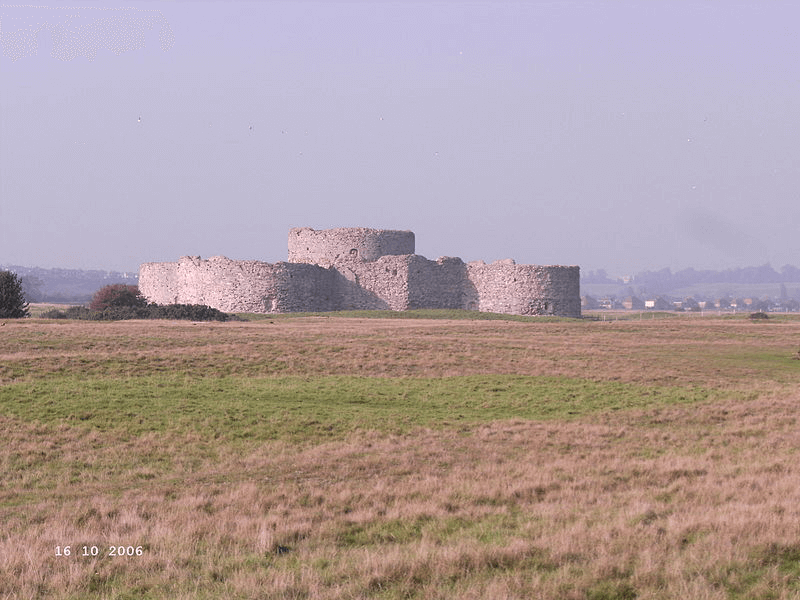
Brief History: Camber Castle is a fascinating example of Tudor military architecture, nestled within the East Sussex landscape. Constructed by Henry VIII in the early 16th century as part of his chain of coastal fortresses designed to protect against French and Spanish invasion, it represents a strategic shift in defensive architecture. Initially a smaller fortification, it was significantly expanded in the 1530s to include a circular central keep with four surrounding bastions. However, by the late 16th century, changes in the landscape and advancements in military technology rendered the castle obsolete, leading to its abandonment.
Architectural Highlights: Camber Castle’s design reflects the transition from traditional medieval castle structures to the more modern bastion fortresses that could withstand artillery assault. The castle features a unique blend of medieval and Tudor architecture, with its circular central keep and radiating bastions designed for cannon deployment. Despite its eventual desertion and partial ruin, the structure remains a significant example of Tudor military planning and architecture, offering insights into the period’s defensive strategies.
Visitor Information: Today, Camber Castle is managed by English Heritage and the Rye Harbour Nature Reserve. It is accessible to the public through guided tours organized by the nature reserve, typically available between July and September. These tours not only provide a detailed exploration of the castle’s history and architecture but also offer visitors the chance to enjoy the surrounding wildlife and scenic beauty of the nature reserve. The castle’s location within a protected nature reserve makes it a unique historical site, combining cultural heritage with natural conservation.
Hastings Castle
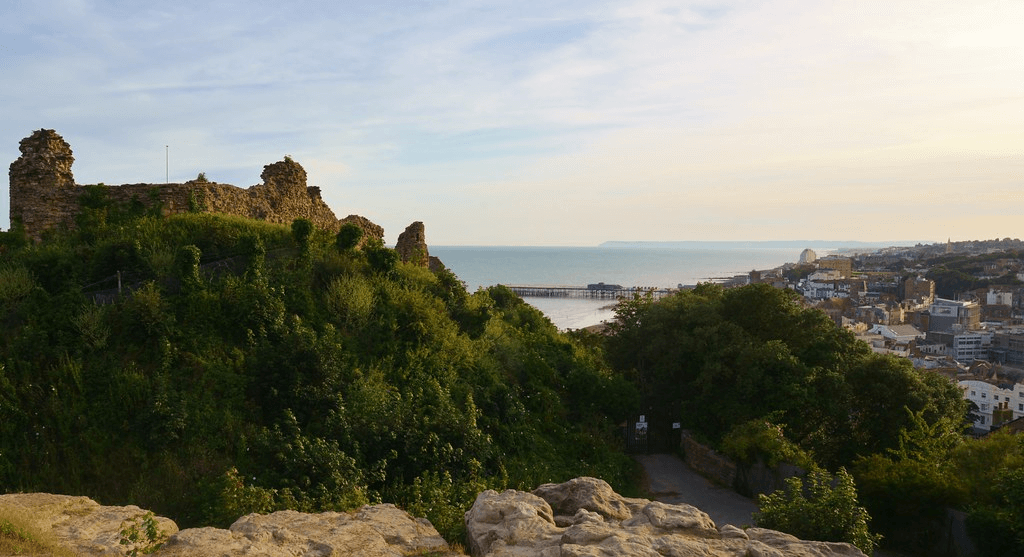
Brief History: Hastings Castle, with its commanding position overlooking the English Channel, holds a pivotal place in England’s history. It was one of the first Norman castles to be built in England, commissioned by William the Conqueror in 1066 immediately following his victory at the Battle of Hastings. Originally constructed as a wooden motte-and-bailey, it was later rebuilt in stone to serve as a formidable fortress and a royal residence. Over the centuries, the castle witnessed numerous historical events but eventually fell into ruin, partly due to the coastal erosion and the dissolution of the monasteries by Henry VIII.
Architectural Highlights: Despite its dilapidated state, Hastings Castle remains a fascinating site. The ruins include the remains of the chapel, which is one of the earliest Norman churches in England, the East Gate, and parts of the walls and towers. The castle’s layout and the remaining structures offer insights into Norman military architecture and their method of establishing control over newly conquered territories. The site’s elevated position also provides panoramic views of the town of Hastings and the English Channel, emphasizing the strategic importance of the location.
Visitor Information: Hastings Castle is now a popular tourist attraction, open to the public for visits. Visitors can explore the ruins through self-guided tours, aided by informative plaques and an audiovisual display that narrates the castle’s and the area’s rich history. The site also hosts various events throughout the year, including outdoor theater performances and historical reenactments, making it an educational and entertaining experience for visitors of all ages. The castle’s dramatic backdrop, combined with its historical significance, makes it a must-visit for anyone interested in England’s Norman heritage.
Pevensey Castle
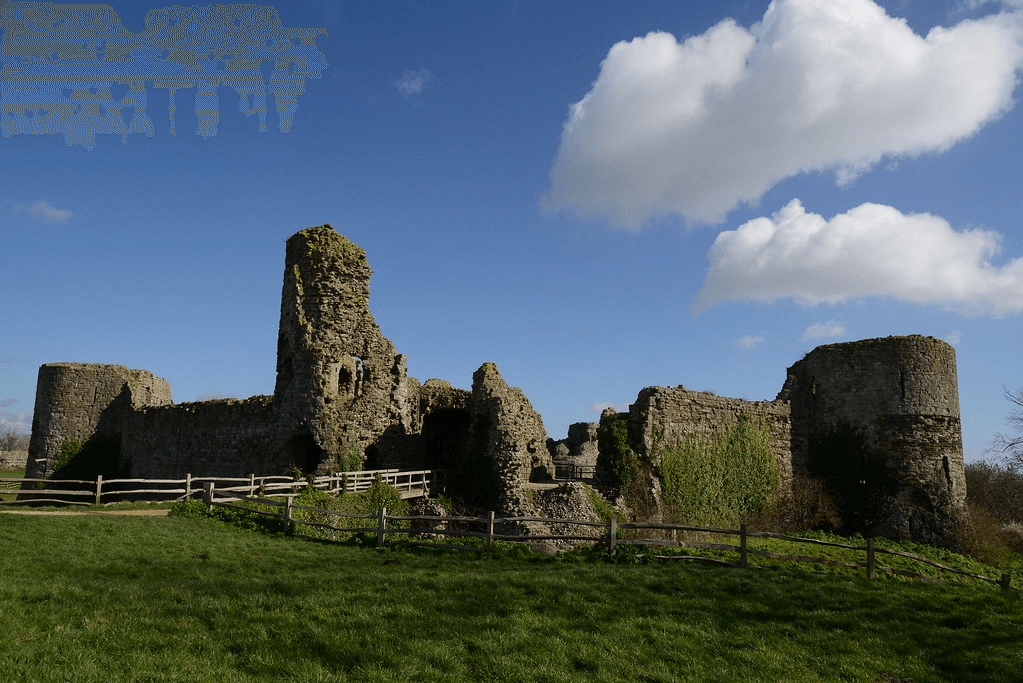
Brief History: Pevensey Castle’s origins date back to the Roman era, making it one of England’s most historically significant fortifications. Initially established in the late 3rd century as a coastal fort, it was part of the Roman network of defenses against Saxon pirates. Following the Roman withdrawal from Britain, the site was reoccupied and expanded by the Normans after their invasion in 1066, with William the Conqueror landing nearby. The Normans built a motte-and-bailey castle within the walls of the Roman fort, which was later replaced by a stone castle in the medieval period. Over the centuries, Pevensey Castle served both as a royal fortress and a prison before falling into ruin.
Architectural Highlights: Pevensey Castle is unique for its incorporation of Roman walls, which are among the best-preserved in Britain. The Roman fort’s substantial outer walls encircle the medieval castle, providing a clear visual timeline of the site’s development from Roman to Norman times. The inner bailey contains the ruins of the medieval castle, including the keep, towers, and gatehouse. The juxtaposition of Roman and medieval fortifications offers a rare architectural insight into the continuity and change of defensive structures over more than a millennium.
Visitor Information: Managed by English Heritage, Pevensey Castle is open to the public, offering a fascinating journey through time. Visitors can explore the extensive ruins, including the Roman walls and medieval castle remains, through self-guided tours. The site also features informative displays detailing its history from Roman times to the present, making it an educational visit for history enthusiasts and families alike. Seasonal events and reenactments further bring the castle’s rich past to life, providing an immersive historical experience. Pevensey’s blend of Roman and Norman heritage, set against the backdrop of its strategic location, makes it a compelling destination for anyone interested in England’s defensive history.
Lewes Castle
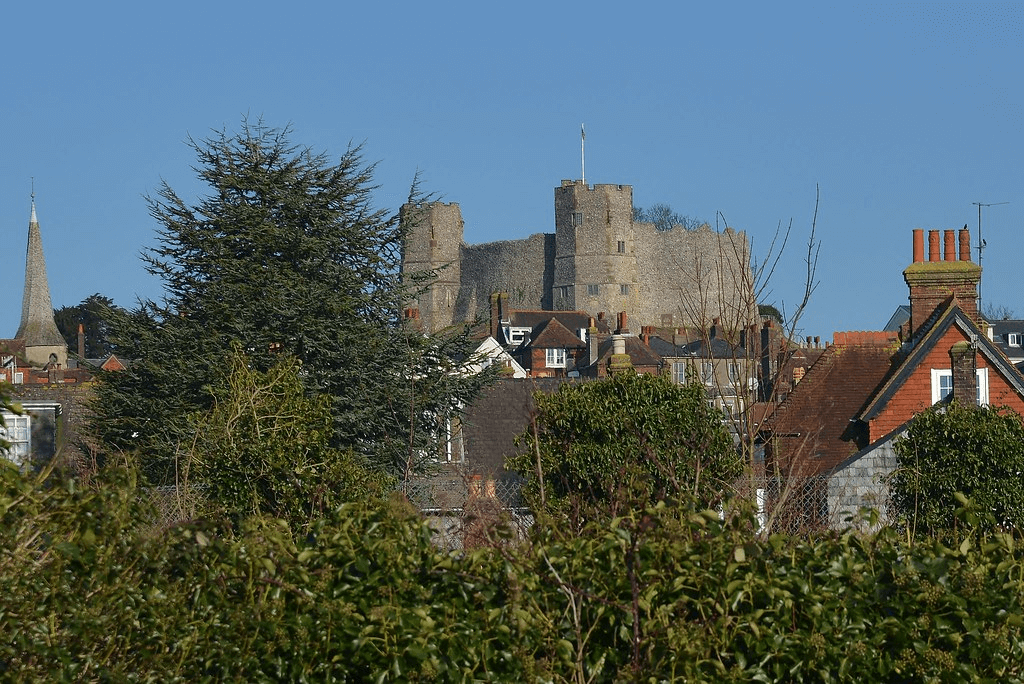
Brief History: Lewes Castle stands as a testament to Norman ingenuity and architectural prowess, dominating the old town of Lewes in East Sussex. Constructed in 1069, just a few years after the Norman Conquest of England, the castle was originally built by William de Warenne, the 1st Earl of Surrey, who was granted the land by William the Conqueror. Over the centuries, it has seen numerous modifications and expansions, reflecting the changing needs and fortunes of its occupants. Unlike many castles that served purely military purposes, Lewes Castle also functioned as a lordly residence and a center of administration for the surrounding estates.
Architectural Highlights: Lewes Castle is distinguished by its two mottes, a rare feature among English castles, which provide panoramic views of the surrounding Sussex countryside. The castle’s keep, built on the higher of the two mottes, remains a prominent feature of the structure, offering insights into Norman military architecture. The Barbican Gate, another significant architectural element, served as a fortified entrance, showcasing the defensive strategies employed during the medieval period. The castle’s surviving structures, including the 14th-century barbican and the curtain walls, highlight the evolution of castle design over several centuries.
Visitor Information: Today, Lewes Castle is managed by the Sussex Archaeological Society and is open to the public. Visitors can explore the museum housed within the castle, which contains exhibits on the history of Lewes and the castle itself, including archaeological finds from the surrounding area. The climb to the top of the keep is rewarded with breathtaking views, making it a popular attraction for tourists and locals alike. Educational programs, guided tours, and special events are regularly held at the castle, offering a deeper understanding of its historical context and significance. The combination of its rich history, architectural beauty, and cultural offerings makes Lewes Castle a must-visit site in East Sussex.
Preservation and Tourism
The preservation of East Sussex’s castles is a complex and ongoing challenge, involving efforts to protect these historic structures from the ravages of time, weather, and human activity. These efforts are critical not only for maintaining the physical integrity of the castles but also for preserving their historical significance for future generations.
Tourism plays a vital role in these preservation efforts, providing the necessary funding and public interest to support restoration and maintenance projects. By visiting these castles, tourists contribute to the local economy and the conservation of these important cultural landmarks. Moreover, educational programs and events hosted at the castles help raise awareness of the importance of heritage conservation and encourage active participation in preservation initiatives.
Visitors to East Sussex’s castles can take pride in knowing that their interest and support help ensure the survival of these historical treasures. Through responsible tourism and active engagement with the history and culture of the region, we can all play a part in safeguarding the legacy of England’s medieval past.
Conclusion
The castles of East Sussex are more than mere relics of a bygone era; they are living monuments that continue to inspire, educate, and fascinate those who walk their ancient halls and battlements. As we explore these magnificent structures, we are transported back in time, gaining insights into the lives of the people who built them, lived in them, and fought for them. These castles remind us of the complexity of history, the evolution of society, and the enduring human desire to build, protect, and remember.
By supporting the preservation of East Sussex’s castles, we contribute to the ongoing story of England’s heritage, ensuring that future generations can continue to learn from and be inspired by these testaments to human ingenuity and resilience. Whether you are drawn to the romantic allure of medieval architecture, the thrill of uncovering history, or simply the beauty of the English countryside, the castles of East Sussex offer a rich and rewarding experience that is not to be missed.

